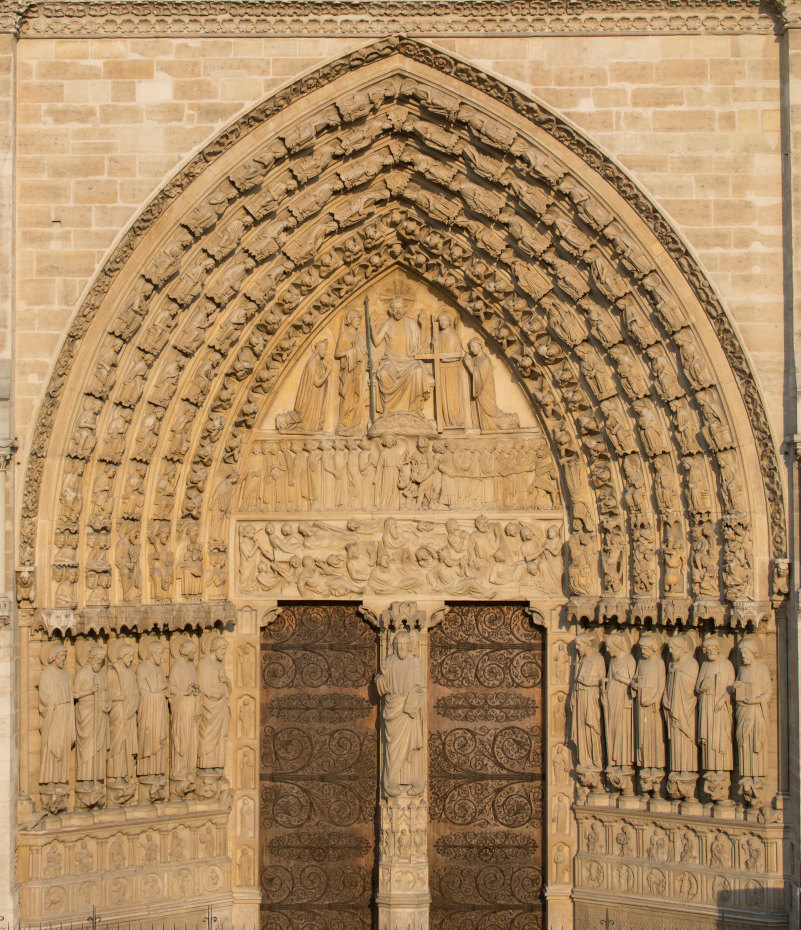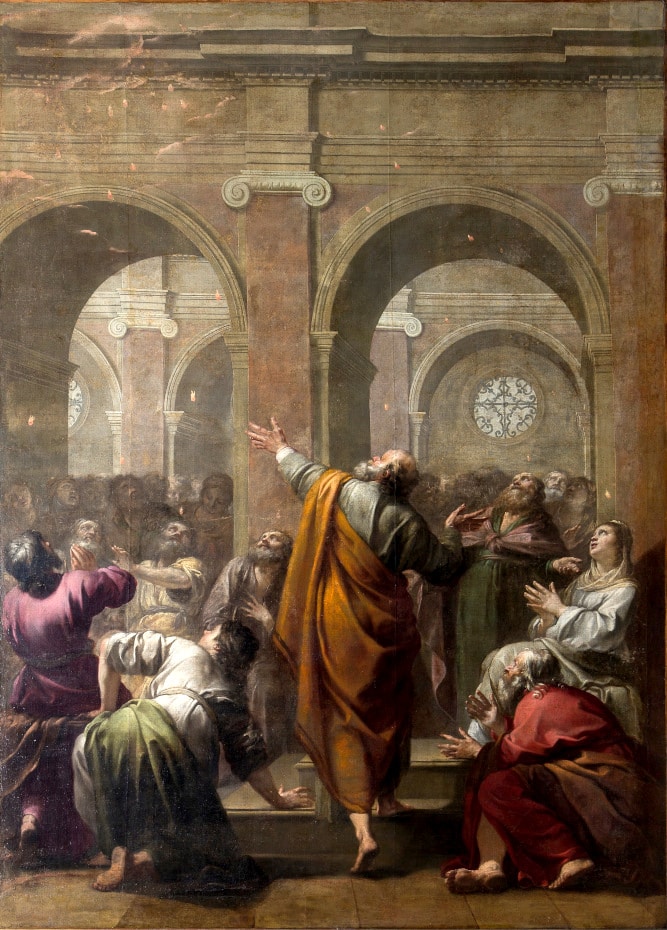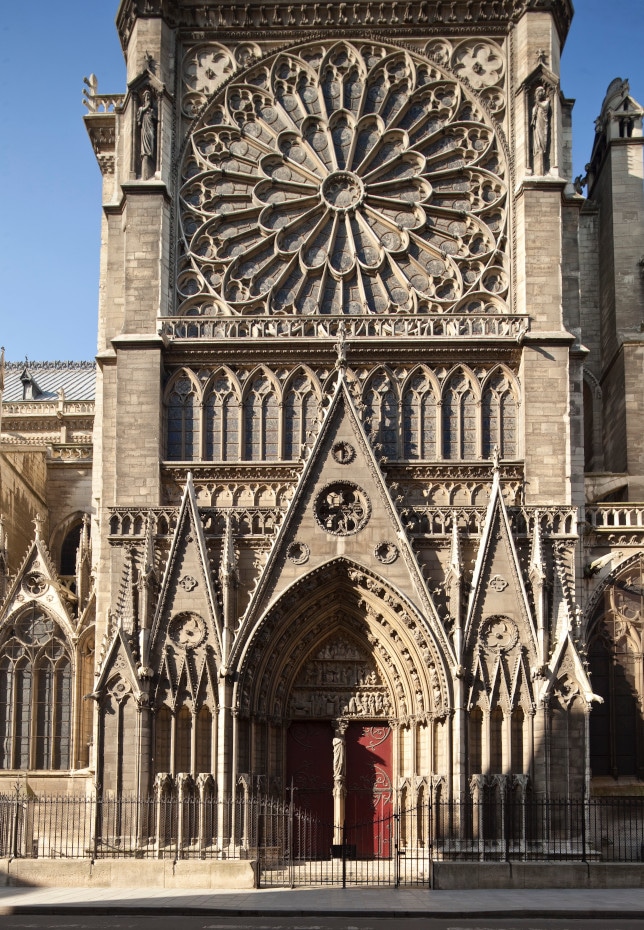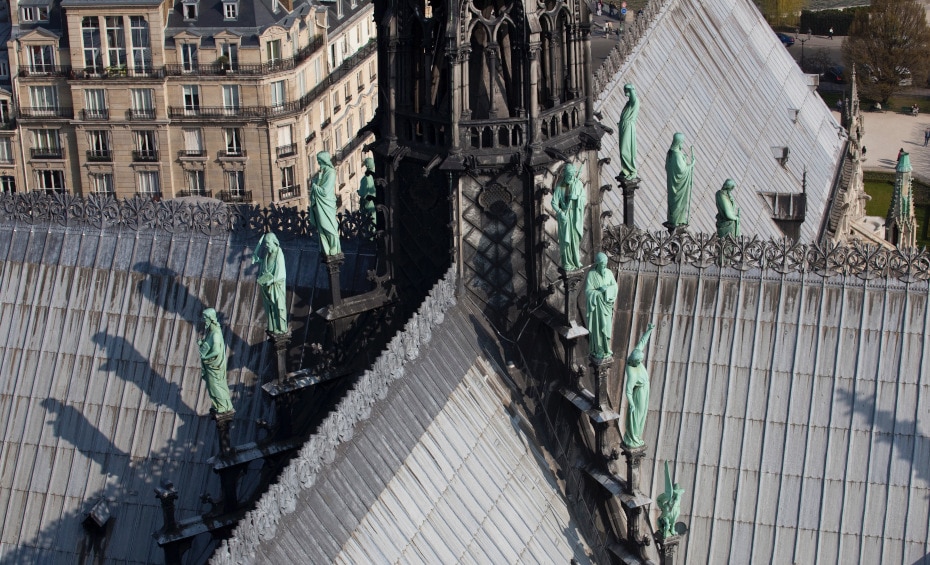The portal of the Last Judgment was installed on the west façade between 1220 and 1230. It represents the judgment of God, according to Saint Matthew, where the accursed are chastised and the blessed are welcomed into eternal life.
The portal of the Last Judgment was installed after the other two portals on the facade. It represents, in Christian iconography of the Middle Ages, the judgment of God when the soul of the deceased is resurrected. According to Christian tradition, God "will judge the living and the dead". The Gospel of Saint Matthew records the words of Jesus: "what you did to the least of one of my brothers, you did it to me".
On the lower lintel, the dead rise and leave their graves. The angels sound the trumpet. These figures include a pope, a king, women, warriors, and an African man. At the top lintel, Archangel Michael weighs souls and two demons try to tip the scales. The chosen are led to paradise (at the right hand of Christ) while the damned, chained and terrified, are led by other demons to hell.
On the tympanum, Christ is seated in glory. He shows the wounds on his hands and his side. Two angels carry the instruments of the crucifixion: the spear and nails for one, the cross for the other. Mary and Saint John kneel on either side. As in the other portals, the celestial court occupies the arches: angels, patriarchs, prophets, theologians, martyrs and virgins. Hell occupies the right of the arches. The "wise virgins" (to the right of God) symbolize the hope of reaching paradise, carrying lighted lamps, while the "foolish virgins" carry extinguished lamps. In the center of the portal, on the pillar between the two doors, the teaching Christ stands on a plinth.
On either side of the doors, the sculptures represent the twelve apostles. On the left are Bartholomew, Simon, James the Younger, Andrew, John and Peter, and on the right are Paul, James the Elder, Thomas, Philip, Jude and Matthew. In 1792, the revolutionaries destroyed these statues, so the statues we see today are replacements. At the foot of the Twelve Apostles, medallions represent virtues and vices, a theme repeated on the stained glass windows of the western rose window.
The portal of the Last Judgment underwent two important modifications in the 18th century. The first, in 1771, occurred when the architect Germain Soufflot removed the pillar and the central part of the two lintels because the Archbishop wanted to facilitate the passage of the canopy during processions. A wooden arch evoking Mary enhanced with a crown worn by two angels replaced the gap. Two doors replace the heavy door panels, one carved with Christ carrying his cross; the other of Maria Dolorosa, Mary weeping in pain over the death of her son. The second modification dates from the cathedral’s major restoration in the 19th century. During this campaign, the architect Viollet-le-Duc reverted the portal to its original state. He restored and replaced the overmantel, the statues of the wise virgins and the foolish virgins, and the statues of the twelve apostles.



